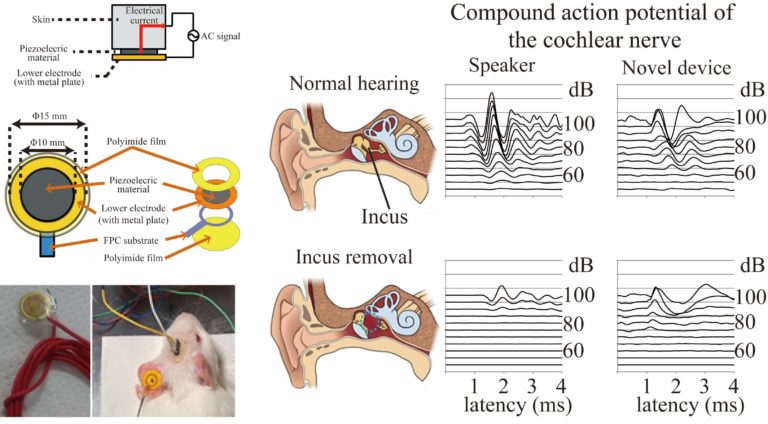Bone conduction hearing aids are the only non-surgical devices used for conductive hearing loss. However, they are impractical for lifelong use since they require close contact of the transducer with the head skin, causing skin erosion and discomfort. Bone conduction hearing implants and active middle ear implants do not present these issues; however, they require surgery and can sometimes cause problems in the skin surrounding the devices. This study aimed to develop a new bone conduction hearing device that does not exert pressure on the skin or require surgery.
Our device modified a piezoelectric element by using the skin of a pinna as one of the two electrodes of a conventional piezoelectric device. We compared the sound transmission of a speaker, a conventional piezoelectric device, or the new device to the guinea pig cochlea, a physiological sound transducer to the auditory nerve, in normal and air-conductive hearing loss conditions.
The novel device transmitted sound to the cochlea even after causing air-conductive hearing loss. Moreover, its bone conduction was more efficient than the speaker and the conventional piezoelectric device.
In conclusion, we developed a novel type of bone conduction device that efficiently transmits sound to the cochlea by skipping the external auditory canal, tympanic membrane, and middle ear ossicles. In addition, this device does not exert pressure on the skin, which can result in skin damage, an adverse effect of a conventional bone conduction hearing aid. Therefore, our novel hearing device can be used as a substitute for current bone conduction hearing devices.

